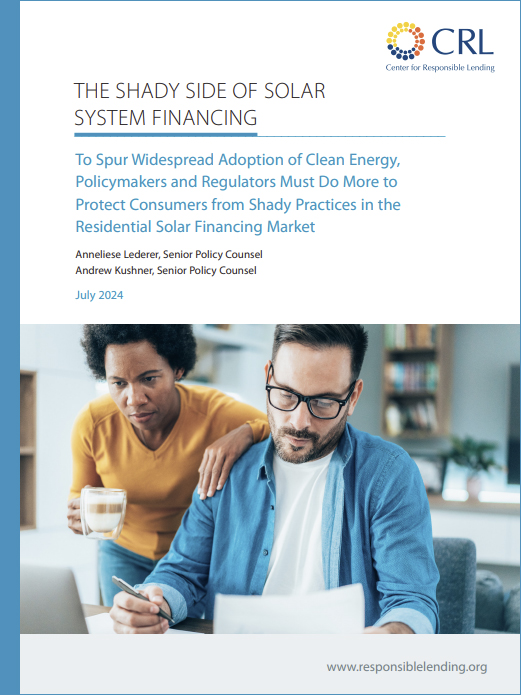Rising energy costs and the increasing environmental threats posed by climate change are causing a growing number of American homeowners to turn to the financial services sector to pay for energy-efficient renovations and upgrades to their homes. This segment of a broader financial market, known as consumer green lending, provides financing for many consumer products designed to have a positive environmental impact and provide potential energy cost savings. As of 2023, 4.4% of all residential homes in the United States had solar power systems installed, with Hawaii, California, and Arizona having the greatest percentages of homes powered by residential solar systems. The solar finance industry is significantly smaller than the mortgage market; however, its reliance on securitization for capital and an estimated $3.89 billion in asset-backed securities represents a growing economic footprint. The clean energy transition in the United States will not succeed and will not be equitable without broad adoption by low-to-moderate income (LMI) consumers. This will require a clear understanding of the consumer benefits of clean energy, as well as effective state and federal consumer protection regulations.
Key Findings
- Elements of solar financing products and sales processes are identical to those used by predatory subprime lenders in 2007 to target low- and moderate-income and minority borrowers.
- GoodLeap, Sunlight Financial, Mosaic, Sunrun, and Sunnova together account for 80% of the residential solar loan market, according to the most recently available public estimate.
- Solar financing agreements often leave homeowners in a worse economic situation than before the door-to-door salesperson visited them. This solar debt elevates the risk that the consumer will lose their home to bankruptcy or foreclosure.
- The price of the solar system typically is substantially inflated if a consumer finances a system. This allows door-to-door sellers to falsely represent that borrowers are getting financing with a low nominal payment rate when most of the financing cost is hidden in the inflated price of the solar panel system. This markup amount is not revealed to the homeowner, and installers are often forbidden from disclosing the markup.
